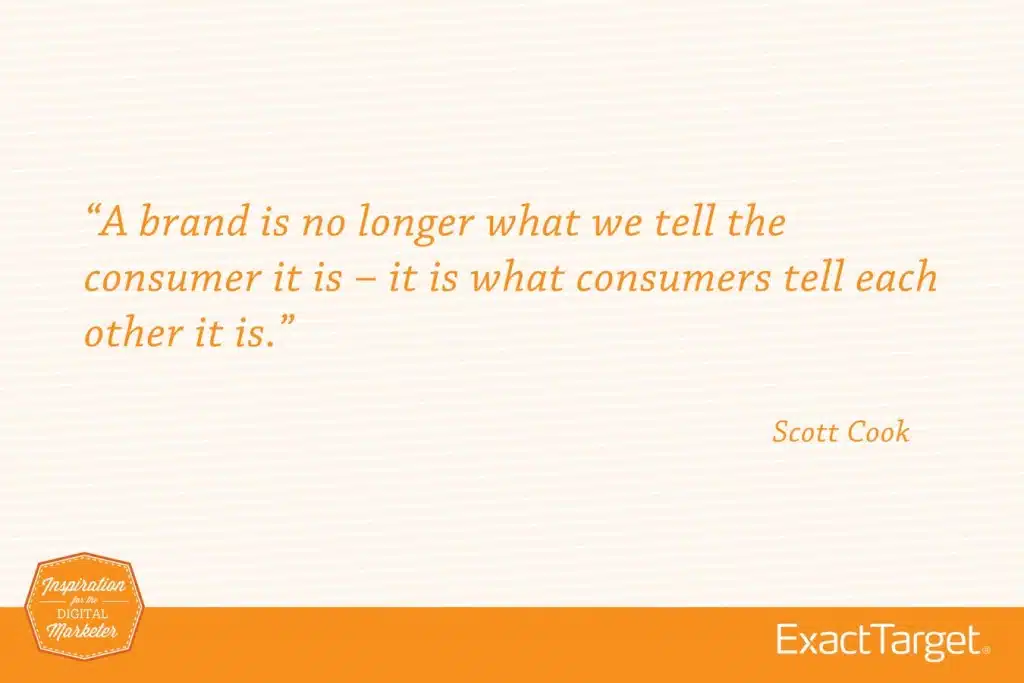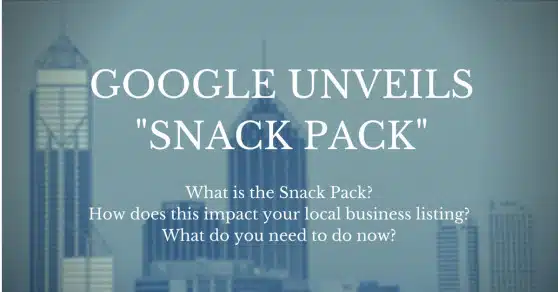The following 80 digital marketing motivational quotes are certain to inspire you to get back to work. (Instead of reading our blog.) Click the link.
Category: Mobile Marketing
Understanding Google’s Three Listing Snack Pack
While many of us were trying to make sense of Google’s recently announced restructuring, Google once again shook up the world of search. Google scaled back the amount of real estate it provides for featured search results by rolling out its three-listing Snack Pack, which gives preference to the top three results instead of the top seven. The advent of the Snack Pack underscores the need for enterprises to practice sound search engine optimization (SEO) at the local level.
To recap: Google’s Snack Pack format highlights only the three top listings in search results, as opposed to the seven-listing format previously used. The three-pack takes a mobile-first design approach, whittling results to basic address, weblinks, and driving directions, as this example illustrates by revealing search results for “gyms downtown Chicago”:
There is no other way around it: the total amount of local and local organic listings on the first page of Google’s search results just dropped by almost a quarter, and some businesses are dropping out as a result. If you are concerned about losing search traffic in a post-Snack Pack world, here’s what you should do:
- Review your local organic search strategy. Why? Because if you were in the 4-7 spots of of the local pack, there is a likely chance that Google will send less traffic your way moving forward. So make sure you are following all best practices for optimizing your local business pages for organic search and continue working to build additional local links.
- On the other hand, don’t neglect to continue optimizing your Google My Business listings and creating additional citations, both structured and unstructured. The conflation of local and local organic signals continues; so ignoring one in favor of another is not in your best interest.
Incidentally, I suspect many businesses will notice a decrease in site traffic and onsite conversions attributable to Google thanks to the Snack Pack. The decrease is beyond the control of your own efforts to optimize for Google and SEO. Rather, Snack Pack listings now show fewer trackable links to websites. In the example I cited for a search for “gyms downtown Chicago,” Google reveals a website and links for the three businesses listed: East Bank Club, Lakeview Athletic Club, and Quads Gym. When you click on the website links, you are indeed taken to the websites for each business. But when you click on the other links associated with each name, you are taken to Google’s Local Finder:
Visiting this Local Finder is not a trackable action from the standpoint of your Web analytics.
So don’t panic if you see a dropoff in measurable Web traffic. The dropoff doesn’t necessarily mean that your local performance level is decreasing, but rather the trackable performance level from Web analytics is decreasing. Instead, look to other metrics like Google My Business reporting, call volume, and in-store visits.
Author Credit: Adam Dorfman
Why You Need a Social Media Calendar
Perhaps you’re wondering whether or not you need a social media calendar. After all, does anybody really “like” planning and organizing posts? I certainly don’t. But I also know how busy I am. And sometimes that business gets in the way of implementing an optimum social media strategy. Here’s how you can stay on top of your social engagements each and every week. In other words, why you need a social media calendar.
1. Point of Reference- The best part about having a calendar is the fact that you can look back upon it as a guide. For example, which posts and during what time of day were they the most effective? Having a physical point of reference is helpful in creating content that has already proven to be well-liked by your audience.
2. Content Strategy- Once you’ve determined which posts have been most successful, you can create more content that drives engagement from your readers. You might be surprised which of your posts become the most shared and popular. Social insights will help you gauge your audience better so that you can keep serving up content that people enjoy.
3. Consistency- Consistency is key in any business strategy. You need a social media calendar to ensure all of your social channels are getting equal attention. Don’t be playing favorites on Twitter and neglecting Facebook, or vice versa. A calendar tracks and plans all activity across the board so that your efforts are widespread and diversified.
4.Cut the Crap- Social media calendars also help you avoid poorly-written content. How so? Not every writer can whip something up that’s worthy of a read in such a short amount of time. If you allow time for proper research, you’ll have an article that’s more informative, factual, and engaging.
Deadlines, content ideas, and a social media calendar are the breadth of a writer, with the exception of those few who break the rules(and you know who you are).


